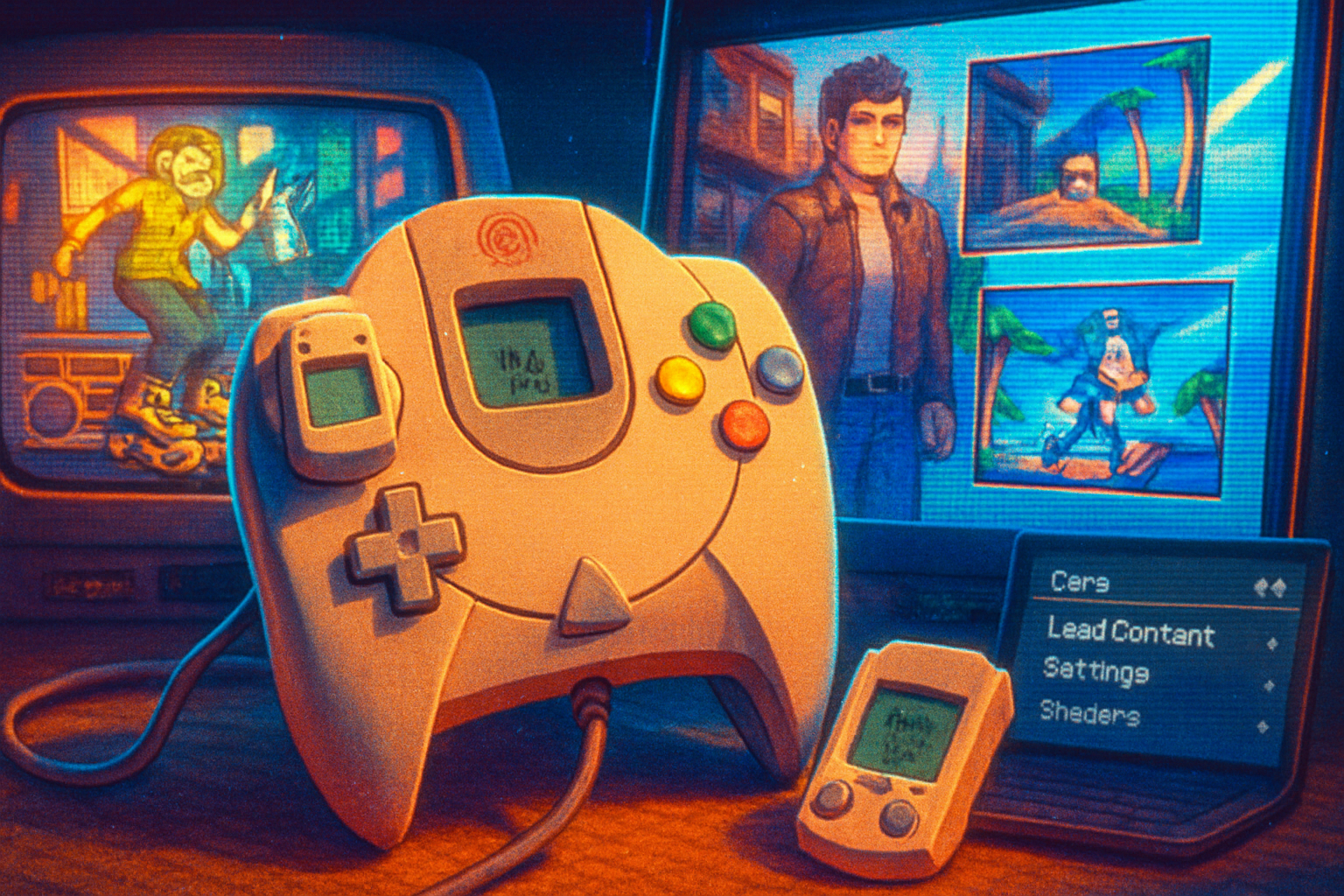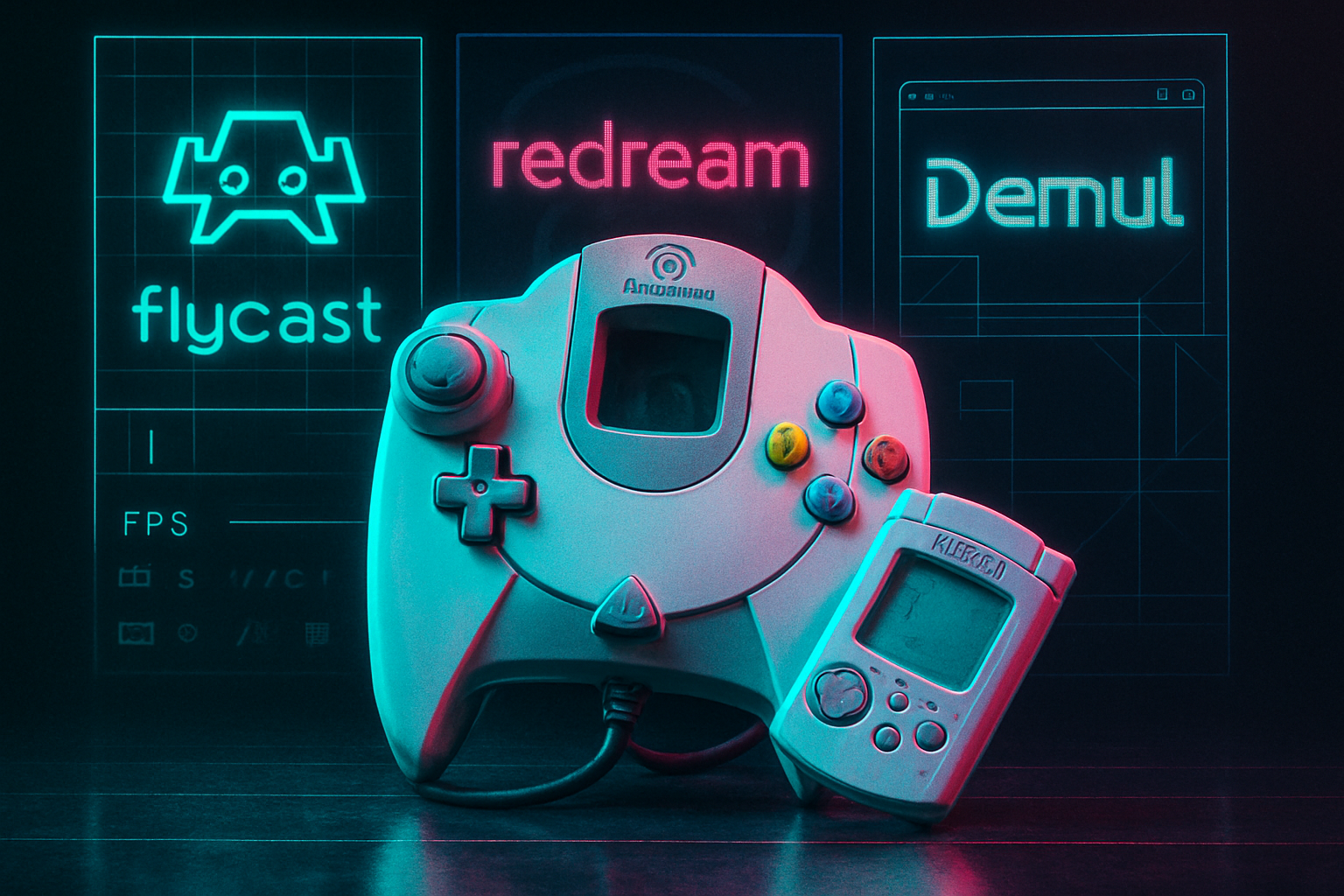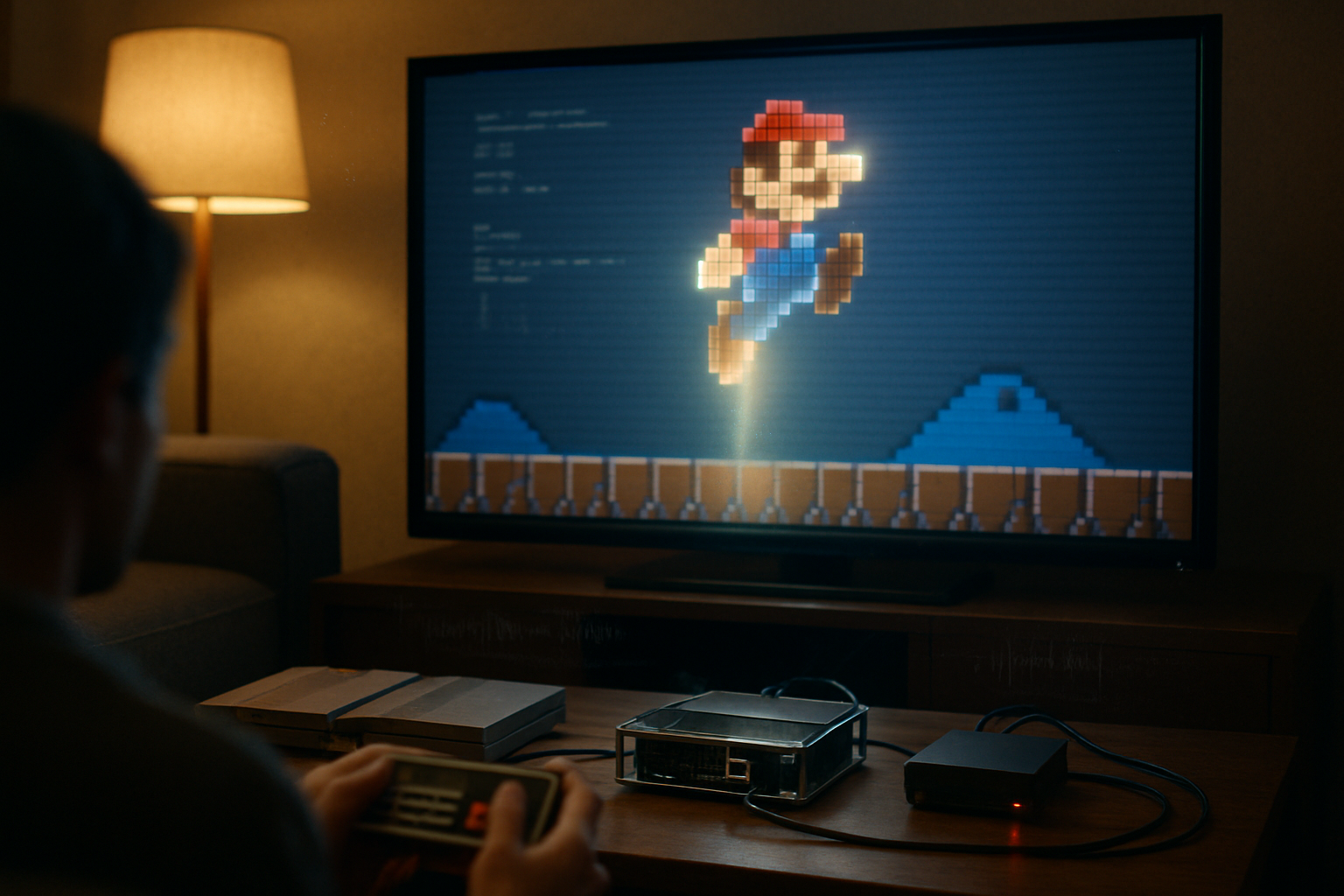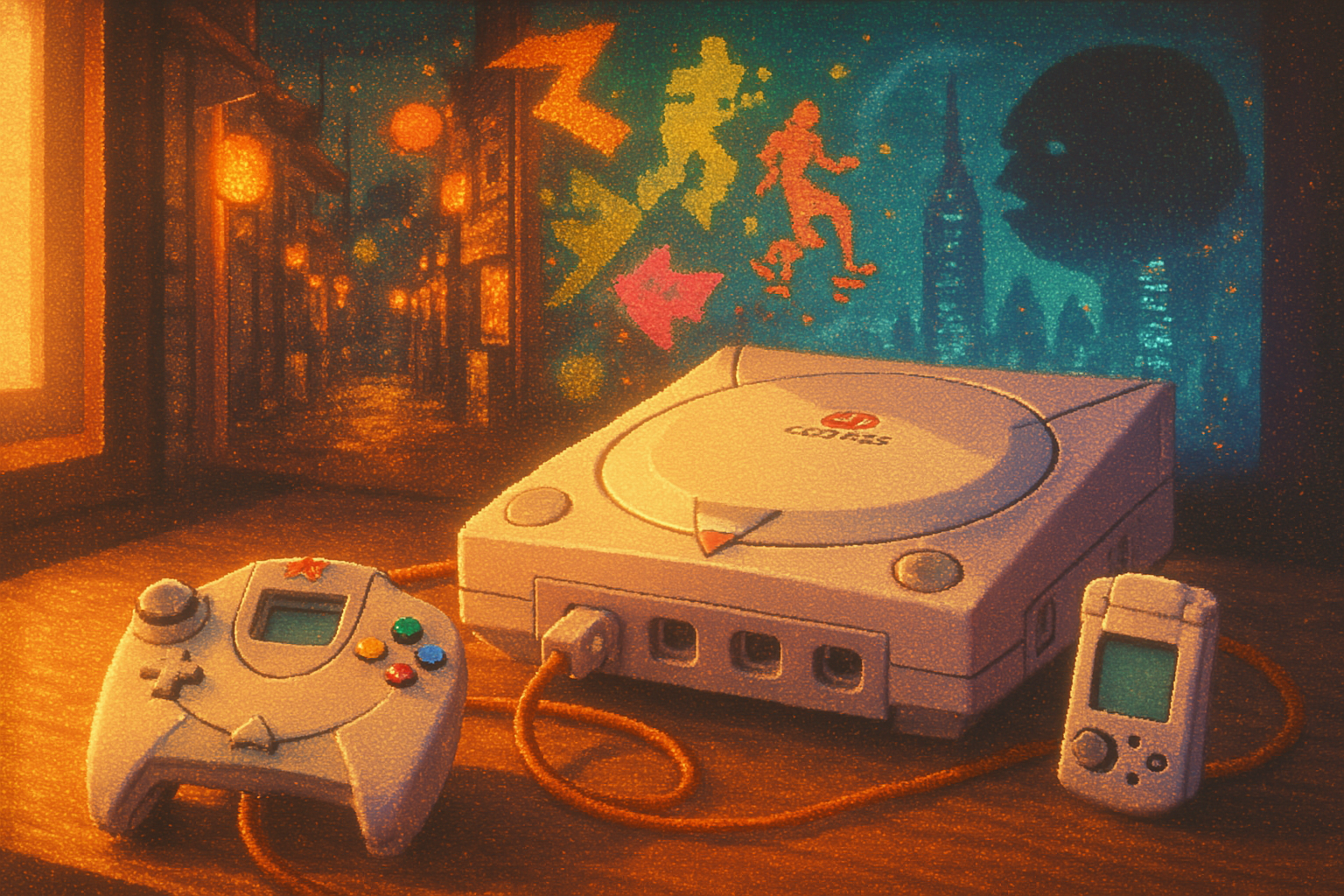· retrogaming · 5 min read
The Rise of Sega Dreamcast Emulators: Nostalgia in the Digital Age
Dreamcast emulators have sparked a retro revival-bringing classic titles back to life with modern features, preserving gaming history, and connecting generations of players. This article explores the technical, cultural, and legal dimensions of that resurgence.

Introduction: A Console Ahead of Its Time
For many gamers, the Sega Dreamcast occupies a special place in video game history: brief, brilliant, and beloved. Released in 1998 (1999 in many regions), the Dreamcast introduced online play, memory card minigames via the VMU, and a bold, eclectic library. Though its commercial life was short, its influence endured-and in the 21st century that influence has been magnified by emulation.
Emulators have made it possible to run Dreamcast titles on modern hardware, often with enhancements that the original hardware could scarcely imagine. This piece explores how Dreamcast emulators rekindled nostalgia, enabled preservation, and shaped contemporary gaming culture.
Why the Dreamcast Became an Emulation Darling
Several factors combined to make the Dreamcast particularly suited to an emulation-driven renaissance:
- Distinctive, high-quality games - Classics like “Shenmue,” “Sonic Adventure,” “Jet Set Radio,” and “Soulcalibur” cemented the Dreamcast’s cult status.
- Compact library and well-documented hardware - Compared to some consoles, Dreamcast hardware and many ROMs/ISOs were relatively well-understood by the emulation community.
- Early network features - The Dreamcast’s built-in modem and online services inspired communities to recreate servers and maintain online play long after official services shut down.
For background on the console and its legacy, see the Dreamcast overview on Wikipedia.
Modern Emulators: From Reicast to Flycast and redream
Over the past decade, emulator development matured from experimental ports to polished, user-friendly solutions. A few notable projects:
Flycast (libretro core) - A mature Dreamcast core that supports upscaling, enhanced rendering, and online multiplayer via RetroArch’s netplay features. See the Flycast documentation for details.
redream - A user-friendly, high-compatibility Dreamcast emulator that emphasizes ease of use and high-resolution rendering. It’s known for running many commercial titles with minimal configuration.
Reicast (libretro/reicast and earlier standalone efforts) - Early mobile and desktop ports that helped establish Dreamcast emulation on Android and other platforms.
Demul / NullDC / other historic projects - Older Windows-focused emulators that contributed to compatibility research and development.
Alongside these emulators, frontends like RetroArch have simplified configuration and broadened accessibility, making it possible to run Dreamcast titles across desktops, single-board computers, and mobile devices.
What Emulation Adds: Features Beyond the Original Hardware
Emulation isn’t just about playing classic games - it often adds features that refashion the experience for modern players:
- Higher resolutions and graphical enhancements - Upscaling, texture filtering, and widescreen patches can make Dreamcast games look striking on modern displays.
- Save states - Instant saves let players experiment and enjoy older, tougher titles without frustration.
- Controller flexibility - Use modern controllers, remap buttons, or restore original Dreamcast pad layouts.
- Netplay and restored online features - Projects like DreamcastLive have recreated online services for games that once relied on Sega’s servers.
These enhancements help bridge the gap between the original experience and contemporary expectations, while keeping the spirit of the games intact.
Preservation and Cultural Value
Video game emulation plays a crucial role in preservation. Physical media degrades, servers shut down, and hardware becomes scarce. Emulators enable archivists, researchers, and fans to preserve game code, documentation, and historical context for future generations.
The Dreamcast’s short retail life made preservation efforts particularly urgent: emulation allows lesser-known gems to remain playable despite shrinking physical collections. For an overview of emulation and the legal/ethical debates around it, see the Wikipedia entry on video game emulation.
Community, Homebrew, and Revival
Emulation revived community activity around the Dreamcast in several ways:
- Homebrew development - Developers continue to release new games and demos for the Dreamcast scene, often testable via emulators before burning to disc or running on original hardware.
- Fan translations and mods - Emulation makes it easier to apply translations, fan patches, and localization fixes to games that never officially shipped in certain languages.
- Online communities - Forums, Discord servers, and archival blogs share tips, builds, and guides for running Dreamcast titles on modern systems.
These community efforts don’t just keep old games alive - they extend the platform with new creative output.
Legal and Ethical Considerations
Emulation exists in a complex legal and ethical landscape. Core issues include:
- BIOS and copyrighted code - Many emulators require original BIOS files to run legally. Distributing copyrighted BIOS or game ROMs/ISOs without permission is typically illegal in most jurisdictions.
- Ownership and backup rights - Some users argue that owning a physical copy grants the right to make a backup; however, laws vary and this claim is often disputed.
- Publisher attitudes - Some companies embrace preservation and re-releases; others enforce takedowns. Sega’s own stance has evolved-while the company licenses official re-releases, fan-led emulation efforts remain legal gray areas.
For more on legality, consult reliable legal resources and the Wikipedia section on emulation legality.
The Industry Response: Ports, Remasters, and Official Releases
The success of emulation and fan interest has influenced the industry in several ways:
- Official re-releases and collections - Publishers release remasters, collections, and digital storefront ports for modern systems, sometimes inspired by emulator-driven demand.
- Learning from the past - Indie developers and AAA teams study older titles for design cues, leading to spiritual successors and reimaginings.
While official releases can coexist with emulation, they rarely replicate the breadth and immediacy of the emulator ecosystem - especially when it comes to fan translations, mods, and community-driven fixes.
Challenges and Limits
Emulation is not flawless. Compatibility is high for many titles, but some games rely on unique hardware quirks or require accurate timing to run perfectly. Legal constraints and the ethics of copyrighted material also limit how widespread emulator distribution can be.
Moreover, nostalgia can filter memory: modern enhancements can change the feel of a title, and playing a game through an emulator is not always the same as experiencing it on original hardware with CRT timing and authentic controllers.
Looking Forward: Why Dreamcast Emulation Matters
The Dreamcast emulator renaissance is more than nostalgia - it’s an intersection of preservation, community creativity, and technological innovation. Emulators allow new players to discover seminal titles, empower hobbyist developers to continue producing content for legacy systems, and remind the industry of the lasting value of its cultural artifacts.
Whether you’re revisiting Jet Set Radio’s graffiti-covered streets, chasing the mysteries of Shenmue, or exploring indie Dreamcast homebrew, emulation has ensured these experiences remain accessible, adaptable, and alive.
Further Reading and Resources
- Dreamcast (Wikipedia): https://en.wikipedia.org/wiki/Dreamcast
- Video game emulation (Wikipedia): https://en.wikipedia.org/wiki/Video_game_emulation
- Flycast (libretro documentation): https://docs.libretro.com/library/flycast/
- redream emulator: https://redream.io
- RetroArch (front-end for multiple cores): https://www.retroarch.com
- DreamcastLive (community-run online services): https://dreamcastlive.net/
- Reicast (libretro GitHub): https://github.com/libretro/reicast


